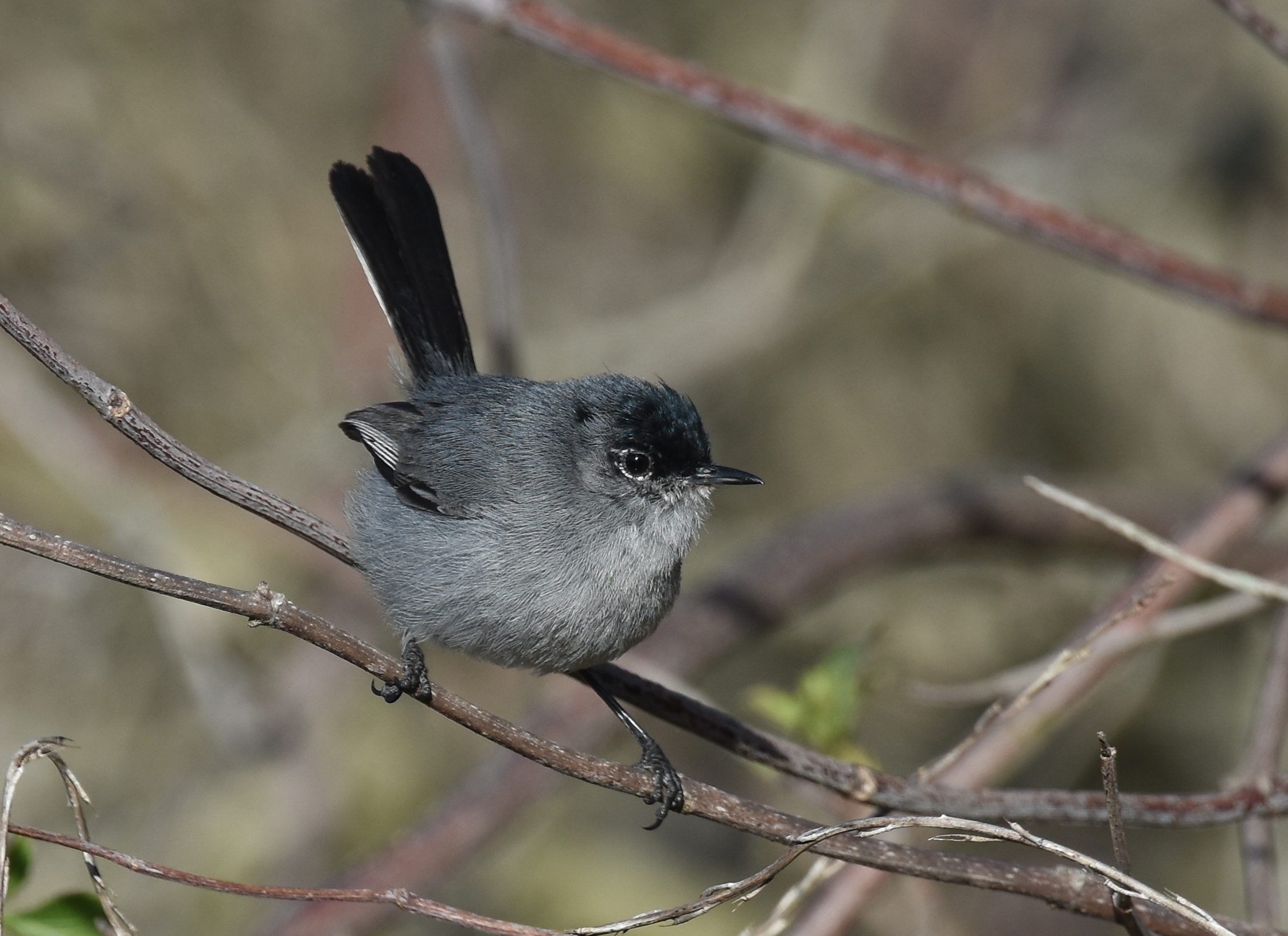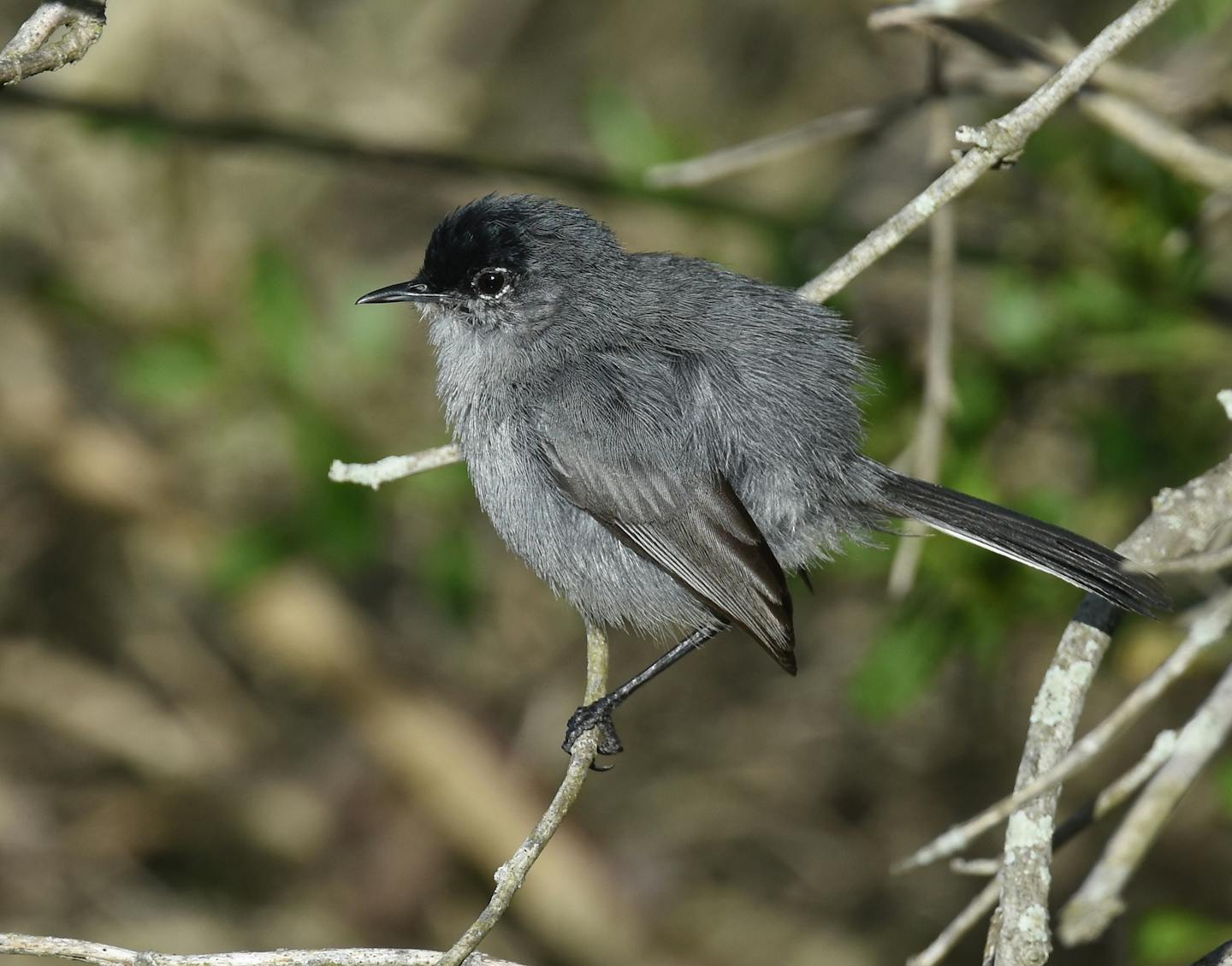California gnatcatcher: a tiny bird that keeps its seaside habitat healthy
Our “Species of the Week” series highlights the flagship species of each of the 844 unique ecoregions contained within Earth’s bioregions.
From the beaches of Baja California, Mexico, stretching north to the cliffs of Santa Barbara, California, a peculiar sound can be heard in the coastal brush. Part kitten's meow, part puppy’s squeaky toy, the California gnatcatcher can startle any hiker or passerby. All while remaining unseen. This small songbird plays a big role in this environment, just as its name suggests, catching gnats and other pests.
Hopping to catch prey
Found nowhere else in the world, these tiny birds thrive tucked away in the coastal scrub. Known in Spanish as the Perlita Californiana, California gnatcatchers only grow to 11 centimeters (4.5 in) and weigh up to just 6 grams (.2 oz). Males can be distinguished by their gray plumage with a black crown, while females have a blue-gray crown.
Flicking their narrow black tails, gnatcatchers hop through the brush rather than fly to catch their prey. They use their thin beaks to peak insects from the undergrowth. A diet of mainly small insects and spiders, California gnatcatchers help keep these populations balanced and their habitat healthy. Too many pests and the coastal vegetation would be overrun and consumed.
_(13853548243).jpg)
California gnatcatcher (Polioptila californica). Image credit: Dominic Sherony, CC by 2.0
Solitary and tough
Despite their petite stature, California gnatcatchers are known for standing up to larger birds more than quadruple their size. Nest predators such as California scrub jays, cactus wrens, or roadrunners quickly abandon their takeover when a gnatcatcher begins to flutter frantically around them. Another trait of the California gnatcatchers is that they haven't been observed bathing in standing water. Instead, they clean their feathers using drops collected on leaves by rain or coastal fog.
Solitary in nature, California gnatcatchers live alone except for joining winter flocks and during the breeding season. Once they find a mate, gnatcatchers become monogamous and maintain the same territories year-round. Both males and females build the nest. Males bring pieces of bark, dried vegetation, and spiderwebs to form a solid base, while females add cushioning material. Two to five small white eggs with reddish spots are laid and incubated by both parents for 14 days.

California gnatcatcher (Polioptila californica). Image credit: Andy Reago & Chrissy McClarren, CC by 2.0
Coastal conservation
This species is especially vulnerable as its limited habitat is often a prime location for beach housing and commerce. The current loss of coastal sage scrub in the US is estimated to be 70 to 90%. Though some of its range has been preserved in national forests and state parks, the California gnatcatchers’ population has been severely fragmented. Many regional conversation efforts have been made to save and restore wildlands in Southern California that will help this species and the surrounding biodiversity continue to thrive.
Explore Earth's Bioregions

